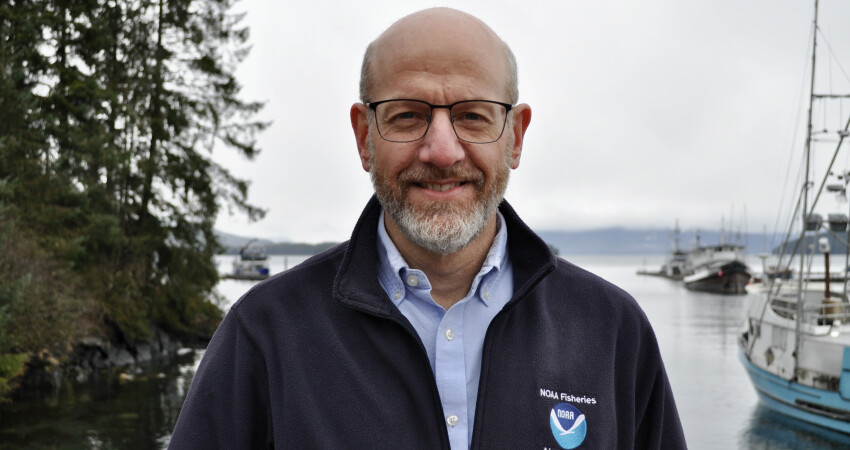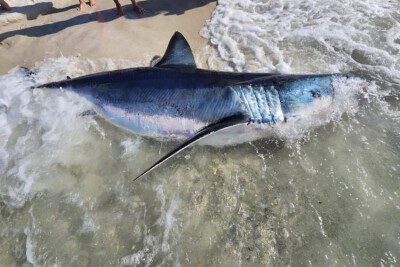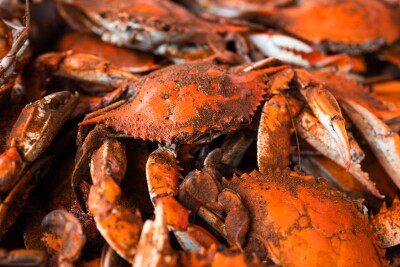Jon Kurland, Alaska regional administrator for the National Marine Fisheries Service, agreed to take questions on the issue of trawl gear touching bottom and the pollock industry’s Gear Innovation Initiative. Here are his responses.
NF: It seems the issue of pollock trawl gear contacting the seafloor has taken on a higher profile lately. Is this true, and if so, why?
Jon Kurland: It’s been gaining attention for a while. A number of stakeholders have raised concerns about unobserved mortality of crabs from pelagic trawls contacting the seafloor as well as impacts to bottom habitats. It was a big topic during the North Pacific Fishery Management Council’s review of potential new management measures for the Red King Crab Savings Area in the Bering Sea – an area that is closed to bottom trawling but open to pelagic trawling.
NF: What role have you and Alaska’s fish and game commissioner, Doug Vincent-Lang, played in elevating this issue?
JK: Commissioner Vincent-Lang and I have met with members of the pollock industry about this a number of times. We told them this is an important issue and that we’d like to see the industry take a leadership role in exploring and devising viable solutions to reduce bottom contact in areas where that’s a concern due to potential consequences for unobserved mortality of crabs or impacts to bottom habitats.
NF: Do we know enough now about the actual impact of trawl gear on the bottom and benthic habitat?
JK: It’s important to distinguish between bottom trawls and pelagic trawls. We know that bottom trawls are designed to fish on the bottom, and managers have closed some areas to bottom trawling specifically to avoid those impacts. Unfortunately, we don’t know a lot about how much pelagic trawls contact the bottom. We know that fishermen sometimes fish these nets very close to the bottom and make contact with the seafloor, but we don’t have much quantitative data about that.
NF: What is the “fishing effects model” utilized in North Pacific fisheries?
JK: The council uses a model to evaluate the effects of different types of fishing on essential fish habitat. The resulting analyses to date have indicated that Alaska fisheries have no more than minimal and temporary impacts on EFH.
NF: What’s the distinction between crab bycatch and unobserved mortality?
JK: Crab bycatch refers to crabs that are unintentionally caught and retained in the net. Pelagic trawling results in very low levels of crab bycatch. Unobserved mortality refers to crabs that are crushed by fishing gear on the bottom and die, either instantly or later due to their injuries. We have very little data on the degree of unobserved crab mortality caused by pelagic trawls.
NF: Alaska’s trawl fleets are embarking on a Gear Innovation Initiative. What do you make of this effort? Is it something NOAA Fisheries has encouraged, or even required?
JK: It’s a worthwhile effort to catalog and characterize the different types of pelagic trawls and improve understanding of the amount of bottom contact. That should be a useful baseline.
NF: Ideally, what do you see coming from the initiative?
JK: My hope is that this will lead to innovation that results in redesigning pelagic trawls and/or changing fishing practices to facilitate fishing effectively with less bottom contact in areas where that matters.
NF: Will NOAA Fisheries be an active partner in the initiative, and possibly even provide funding?
JK: NOAA Fisheries has a Bycatch Reduction Engineering Program that offers grants for projects that seek creative solutions to fishery bycatch challenges, including fishing gear design.







